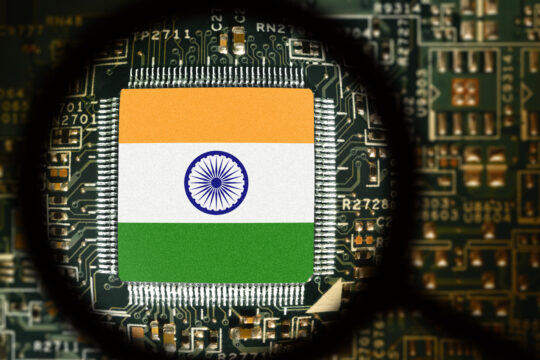The Indian government is evolving. Digitization across sectors is transforming the Indian babu into a trendy accessible guy. Business process reengineering, technology and data analytics are making efficient changes in the way governance is now run in India.
To ensure that benefits from social welfare schemes do not pilfer into the hands of spurious beneficiaries, unique biometric identifiers are being put to use in programs like The Direct Benefit Transfer (DBT). DBT directly puts the welfare amount into the bank accounts of the beneficiary.
Delhi Government Vehicles to Go Electric
Also, the Public Financial Management System (PFMS) is an end-to-end solution for processing payments, tracking, monitoring, accounting, reconciliation and reporting. It provides the central government with a centralized database for all recipient agencies, integration with core banking solution of banks, integration of state treasurers and tracking of fund flow to the lowest tier of implementation of plan schemes on real-time basis.
Now that more and more Indians are filing their taxes, online, costs on tax collection has gone down. In 2017-18, the IT Department received 6.84 crore income-tax returns, which amounts to a growth of growth of 26%.
Reserve Bank of India Bans Cryptocurrencies
Moreover, apps from the private sector, empowered with Unified Payments Interface (UPI) and Bharat Bill Payment System (BBPS), are making it easier for people to pay for government-provided services from their smart devices. This has increased the amount of bills paid in the country. According to a KPMG report, the bill payments market in India will touch 9.4 trillion by 2020.
Digital payment has become an in-thing in India because of Bharat Interface for Money (BHIM) UPI. BHIM is a payment app that enables simple, easy and quick transactions using UPI. The user can make direct bank payments to another user on UPI using their UPI ID or by scanning their QR with the BHIM app. Money can also be requested through the app from a UPI ID.
Moreover, private apps like WhatsApp Pay, Google Tez, Paytm, Citrus Pay, PayUbiz, PayUmoney, and many more are determining that India heads towards a cashless society.
To take forward the Pro-Active Governance and Timely Implementation (PRAGATI) programme, Prime Minister Narendra Modi has used video conferencing to hold meetings.
According to the Microsoft-International Data Corporation (IDC) study, ‘Unlocking the Economic Impact of Digital Transformation in Asia Pacific,’ digital transformation will bring more than US$1 trillion to Asia Pacific GDP by 2021, and Artificial Intelligence (AI) will be helping a lot.
While healthtech continues to boom in India as is seen through several successful startups like Karma Healthcare, Neurosynaptic and A3RMT, the government of India’s Ayushman Bharat scheme plans to digitally connect primary and community health centers with district hospitals. The initiative pushes for a paperless, cashless, and portable healthcare scheme.
Meanwhile, IIT Kanpur has been entrusted with INR 33.4 crore for the task of building a cybersecurity platform for government initiatives. Also, while the Reserve Bank of India lashed out against cryptocurrencies, it acknowledged the power of blockchain technology and a Central Bank Digital Currency is in discussion.
IIT Kanpur to Work on Cybersecurity for Government Digital Activities
While Aadhar Cards can be stored in government provided digital locker and verified with an e-sign, PayGov and Jan Dhan Yojna ensure a secure and convenient online platform for government to citizen services. Government initiatives, such as the Make in India, Start-up India, Skill India, and policies such as the new electronics policy, software product policy, data security and protection policy, are expected to have a positive effect on government IT spending in the near future.
According to Enterprise Innovation, Ganesh Ramamoorthy, managing vice president at Gartner India, the research company, said, “The Digital India program, which aims to transform the country into a digitally-empowered society and knowledge economy, will call for technology investments in the backbone infrastructure, advanced data analytics, digital security, digital payment and e-commerce infrastructures, digitally-enabled G2G, G2B and G2C services, and score of other related services. This will be the key driver for IT spending growth in the Indian government sector over the next five years.”












